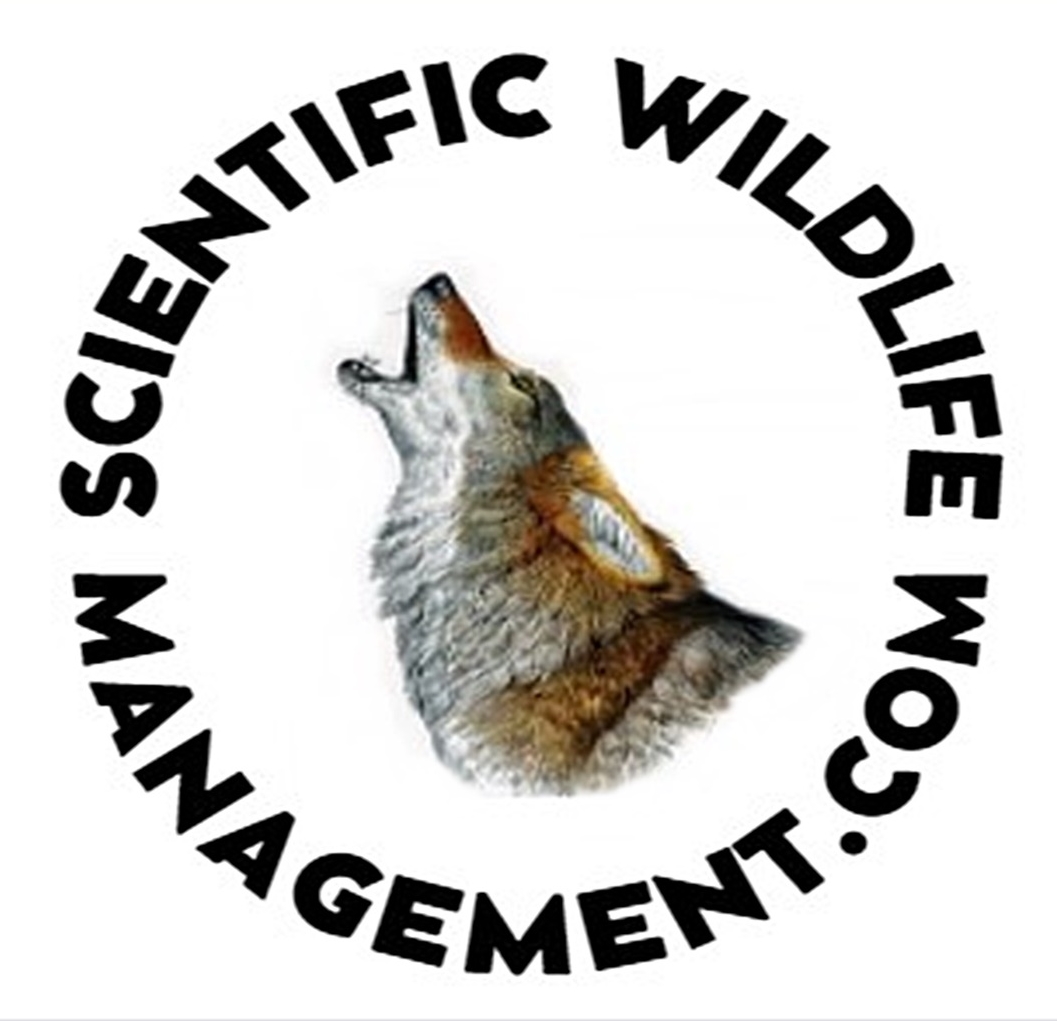To get the most out of this comparison you will need to have a copy of The Humane Society’s Coyote Management Plan and Dr. Timm & Robert Schmidt’s Bad Dogs: Why Do Coyotes and Other Canids Become Unruly? I will refer to specific items and pages in the HSUS plan to illustrate how our ideas for coyote management differ.
We often get asked if we have a coyote policy. Yes we do, please refer to Dr.Timm’s and
Robert Schmidt’s article titled Bad Dogs: Why do coyotes and other canids become unruly?
You can Google the title or find it at http://digitalcommons.unl.edu/icwdm_wdmconfproc
Dr. Timm has spent his life studying coyote attacks on pets and humans. Based on our hands
on experiences with problem coyotes Dr. Timm’s data and conclusions are absolutely accurate.
We have found that when we follow Dr.Timm’s seven steps of aggression and remove the problem coyote from the general population when he recommends removal, the problems cease. Dr. Valerius Geist from Canada who has studied wolf behavior for many many years agrees with Dr. Timm and has noted several similarities in wolf and coyote behaviors. He has also developed a seven steps of aggression profile in wolves that is very similar to the coyote behavior profile. Both of these profiles are accurate. My partner and I have proven that when we followed the coyote management plan based on the research of these two men we can resolve the problem without further injury to pets or people. Then we have the Humane Society’s (HSUS) Coyote Management & Coexistence Plan. Let’s look at the differences and let you determine what is safer for you, your children and your pets. Before everybody calls me an alarmist, I was in Law Enforcement for thirty years, I don’t get alarmed. Attacks on people are a natural progression for habituated animals which is why you are not supposed to feed animals in our National Parks. Habituated coyotes are the problem in urban environments.
You can get a copy of the HSUS plan by searching the internet or going to their web site.
I may surprise you by stating that there are several suggestions that I agree with HSUS. Let’s compare what they think is best for you and your pets and what we know that works to protect you and your pets. In their introduction they list six goals and my reaction to those goals are:
#1..Mentions nothing about your pets safety
#2..Coyotes are not a major predator of Canada geese
#3..I agree
#4..Your pet should be able to play in your yard without being attacked and data shows that coyotes attack whether the pet is attended or left alone
#5..That’s correct that is why we have developed a technique to remove the specific animal/animals that are causing the problem
#6..I agree
See I told you I might surprise you.
Page 5 – Appearance & Signs, the coyotes we deal with typically weigh more than those parameters. I am not being nitpicky just providing information.
Also page 5 under Diet. Look at the seven steps of aggression, the attacks on pets is part of the aggression process that will result in an attack on a human. If you study their suggestions for a pet safe enclosure there is no community in our area that will allow you to build a fence of that nature.
Research has also shown that coyote home ranges in urban environments can be as small as one half mile if their food and shelter requirements are met.
Page 7- Coyote Attractants. I agree you should not feed coyotes either intentionally
or unintentionally. If you have bird feeders, the seed on the ground will attract mice and rabbits which will attract coyotes. Please keep the area under your feeders clean. I feed birds also I know it’s easy to keep it clean.
Also page 7- Unattended Pets. Do not make the mistake to assume that because your pet is on a leash that it is safe from coyote attack. Every year across the country there are dogs snatched off the leash by coyotes. We regularly remove coyotes in communities where a dog on a lease has been attacked by coyotes. There is some information circulating that you should have a leash six feet or shorter to keep your pet safe. There is no scientific evidence that confirms your pet is safer with a six foot or shorter leash. Coyotes cannot measure and pets have been attacked while being held by their owners.
Page 9-Human Attack. The category Provoked, Hazing needs to be added in this area.
Why? If you haze an animal that is sick and is unable to flee you are going to get bit. There are numerous diseases that coyotes carry that show no outward sign of them being ill, heartworm for one. If they can’t flee they will fight.
Page 10- Education & Outreach In the first paragraph last line. HSUS states taking precautions with pets and creating tolerance for normal coyote behavior. HSUS’s definition of normal coyote behavior is that coyotes eat pets and we just need to accept that behavior. I DON’T THINK SO! I have two small dogs I love my dogs their coyote plan does not work for me!
Later in page 10-Hazing.. The HSUS needs to admit the truth that Hazing does not work on habituated coyotes. There is ample evidence from across the country that it does not work.
Some cities are now trying aggressive hazing by shooting the coyotes with paintballs and copper balls (BB’s). This practice is illegal in Illinois and may be in other states. If you need to switch to aggressive hazing then hazing did not work. Several California cities that have tried hazing over the years have started removing the problem animals with foothold traps and that has solved their problems.
Page 11-Lethal Control- This section is false and misleading. Our goal is not to reduce the overall coyote population but just remove the problem animal/animals. If the problem coyote is not there he cannot harm anymore pets or people. There is no scientific study that shows how quickly coyotes will repopulate an area. There are areas that my partner and I have kept problem free for years. If a new coyote moves into an area he may be good neighbor and not cause any problems. In Dr.Timm’s research he states that coyotes that are trapped and removed have a chilling effect on the entire local coyote population which may cause that population to leave the area. We have noted this effect in many areas where we have removed coyotes for local municipalities. That information is on page 299 under Predator Management Programs of Dr.Timm’s presentation Bad Dogs-Why Do Coyotes and Other Canids Become Unruly?
There is some good information in the HSUS plan but as you can see it is slanted to protect coyotes and not you or your pets. There are some common sense questions that you you should discuss to see which plan is best for your community.
#1…Should your pet be considered a food source for coyotes?
#2…Coyotes are observation learners. If coyote pups watch mom attack a pet and provide food do the pups not learn that pets are easy prey?
#3…As coyote numbers increase and the pups have learned that taking a pet is easier than chasing a rabbit, would it not stand to reason that pet attacks will increase.
#4…Ever wonder what the coyote sitting on the school playground was thinking?
#5…Nowhere in our country would a pack of pitbulls or any type of potentially dangerous dogs
Be allowed to run loose on city streets, Why are coyotes?
#6…Why are you being forced to carry some type of protection when you walk your pet when the problem can be solved?
#7…Why do some people not let their kids play in parks or natural areas when that problem can also be resolved?
#8…Why do coyotes have more rights than you or your pets?
WHERE IS THE COMMON SENSE?
We have a solution.
#1…Adopt Dr.Timm’s research and conclusions
#2…Use the seven steps of aggression as a guideline to when an animal needs to be removed
We use foothold traps as Dr.Timm suggest. This is the same type of equipment used by researchers so that animals are not harmed when captured, coyotes can be fitted with radio tracking collars and released unharmed. It is the very same equipment used in the ongoing Cook County Coyote Research Project where almost eight hundred coyotes have been captured and released unharmed. How do I know this? My partner is the person that taught the researchers how to use the equipment and capture the animals.
#3…Report all coyote sightings and incidents to a central location (see our Coyote Sightings page) at scientificwildlifemanagement.com
We have found that problems can often be averted by accurate sightings information.
#4…In the event of an attack to a human, law enforcement agencies need to preserve clothing and blood evidence for DNA testing so that the offending coyote can be captured and identified and other captured animals can be released or relocated. And yes it is possible to relocate coyotes, not popular in some areas but we have proof that it can be successful.
Two final thoughts about which policy is best for your community.
Many cities in California basically follow the HSUS guidelines. California has the highest number of coyote attacks
on people than any other state in the United States. Some have the cities have gone back to removal of the problem coyote plan.
A coyote that is hazed can still attack you or your pet in the future. A coyote that is removed will never have that chance.

